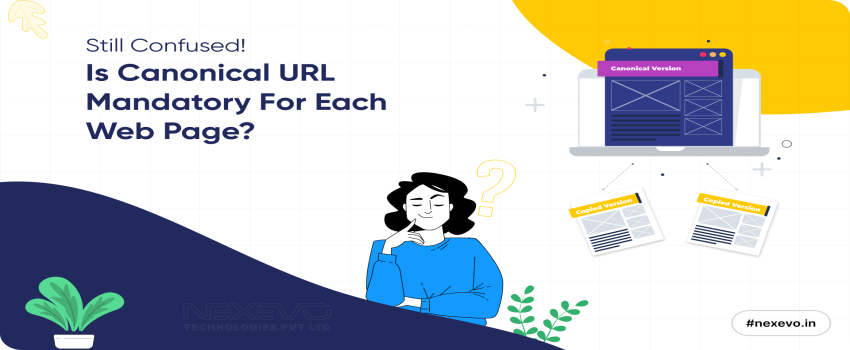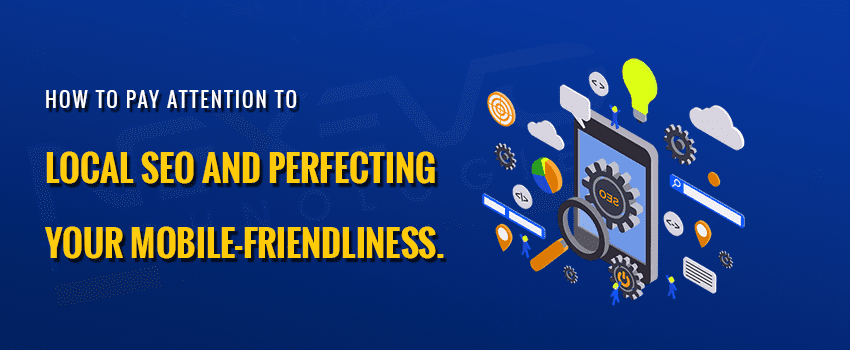Difference Between Product Marketing and Growth Marketing
Navigate to
- Introduction
- What is Product Marketing?
- Product Marketing Example
- Benefits of Product Marketing
- What Is Growth Marketing?
- Benefits of Growth Marketing
- Research Approaches in Product Marketing and Growth Marketing
- Comparing Product Marketing and Growth Marketing
- Integrating Approaches in Product Marketing and Growth Marketing
- Conclusion
In this blog, let's explore the fundamental concepts and the difference between product marketing and growth marketing and understand their roles in driving business success.

Introduction
Everyone knows a company's growth and success depend on an effective marketing strategy and tactics. Two essential strategies are important to the business. They are
1. Product Marketing
2. Growth Marketing
In this blog let’s learn what product marketing is and what growth marketing is. Also, let's analyze the difference between product marketing and growth marketing and know which to choose for your business.
What is Product Marketing?
Product Marketing is the bridge between product development and the market. It involves understanding the needs of
the customer, crafting the message, and positioning the product accordingly. The important duties of product
marketing include conducting market research, creating customer profiles, and positioning product and marketing
tactics
Product Marketing Example
Let’s assume a product, PulseHeart Pro - a fitness tracker with advanced heart health monitoring.
Who is the target audience:
People who are concerned about their health, athletes who seek detailed performance data, and busy individuals who want to live a holistic well-being.
Product Positioning:
PulseHeart Pro positions itself as the ultimate fitness companion, offering not only standard activity-tracking features but also advanced heart health monitoring capabilities. It emphasizes its accuracy, reliability, and comprehensive insights into heart rate variability, resting heart rate, and potential heart irregularities.
The biggest challenge for PulseHeart Pro is that Many fitness trackers focus on steps or basic metrics`.
PulsePoint Pro needed to differentiate itself by highlighting its advanced heart health features.
Let’s discuss what is the solution
We can name the Campaign name “Unlock Your Potential. Know Your Heart” and craft a message saying “: PulseHeart Pro emphasizes going beyond steps by offering insights into heart rate variability, recovery time, and potential heart health risks”.
Now let's discuss, which marketing channels can be utilized,
Targeted Social Media Ads:
Ads on Facebook and Instagram showcasing athletes using PulseHeart Pro to optimize training and older demographics using it to monitor heart health.
Influencer Marketing:
Partnering with fitness trainers and cardiologists to create educational content about heart health and the benefits of PulseHeart Pro.
Content Marketing:
Blog posts and infographics explaining heart rate variability, recovery time, and how PulseHeart Pro empowers users to train smarter and live healthier.
Partnerships:
Collaborations with gyms and health insurance companies to offer discounts or bundled promotions.
PulseHeart Pro may successfully reach its target audience, position itself as a leader in heart health monitoring technology, and increase sales by emphasizing the features and benefits of the product by putting these marketing methods into practice.
Benefits of Product Marketing
Let’s learn some of the 6 benefits of Product Marketing
Increased Sales: An effective product marketing strategy helps increase sales by attracting more customers and convincing them to make a purchase.
Market Understanding: With product marketing efforts, businesses gain a deep understanding of their target market, including their needs, preferences, and behaviors.
Competitive Advantage: Implementing product marketing will differentiate a company's offerings from competitors, helping to establish a unique selling proposition and gain a competitive edge.
Brand Awareness: Product marketing initiatives raise awareness about a company's products or services, increasing brand visibility and recognition among the target audience.
Customer Engagement: By engaging with customers through product marketing campaigns, businesses can build stronger relationships, foster loyalty, and encourage repeat purchases.
Feedback Collection: Product marketing activities often involve gathering feedback from customers, which can be invaluable for improving products, identifying areas for innovation, and enhancing overall customer satisfaction.
What Is Growth Marketing?
Growth Marketing focuses on increasing business growth through data-driven experiments and optimization. Unlike Traditional marketing, Growth marketing prioritizes quick change and continuous improvement based on insights from real-time data. To promote user acquisition, engagement, and retention, it makes use of channels including social media, email, and search engines.
Growth Marketing example
Imagine a startup that has developed a mobile app for language learning. Initially, the app struggled to gain traction and acquire users despite its innovative features and quality content.
To kick-start growth, the startup employs growth marketing tactics:
Referral Program:
The app implements a referral program where existing users can invite friends to join the platform. Incentives such as free access to premium content or discounts are offered to both the referrer and the new user, encouraging them to sign up and engage with the app.
Content Marketing:
The startup creates valuable content related to language learning, such as blog posts, videos, and infographics. This content not only educates users but also attracts organic traffic to the app's website and increases brand awareness.
Social Media Campaigns:
The startup launches targeted social media campaigns on platforms like Facebook, Instagram, and LinkedIn. These campaigns include visually appealing ads showcasing the app's features and benefits, as well as user testimonials to build credibility and trust.
Email Marketing:
The startup implements an email marketing strategy to nurture leads and encourage user engagement. Personalized emails are sent to users based on their behavior and preferences, such as reminders to practice languages, updates on new features, and special offers to upgrade to premium subscriptions.
A/B Testing:
The startup conducts A/B tests on various elements of its app and marketing campaigns, such as app design, messaging, and call-to-action buttons. By analyzing the results, the startup can optimize its efforts to maximize user acquisition and retention.
Partnerships and Collaborations:
The startup forms partnerships with influencers, language schools, and other relevant organizations to expand its reach and access new user segments. Collaborative promotions, joint events, and co-branded content help attract their audiences to the app.
Optimization and Iteration:
Throughout the growth marketing process, the startup continuously monitors key metrics such as user acquisition cost, conversion rates, and retention rates. Based on this data, adjustments, and optimizations are made to the marketing strategies to ensure sustainable growth over time.
Benefits of Growth Marketing
Data-Driven Decisions: Growth marketing relies on real-time data and analytics to inform decisions, allowing
for continuous optimization and improvement.
Scalability: Growth marketing strategies are often scalable, meaning they can be applied across different channels and markets to fuel rapid expansion.
Cost-Effectiveness: By focusing on high-impact tactics and channels, growth marketing can often achieve significant results with minimal investment compared to traditional marketing methods.
Agility: Growth marketing emphasizes quick iterations and experimentation, enabling businesses to adapt rapidly to changing market conditions and consumer preferences.
Improved User Experience: With a focus on user acquisition, engagement, and retention, growth marketing aims to enhance the overall user experience, leading to increased satisfaction and loyalty.
Measurable Results: Growth marketing initiatives are typically measurable, allowing businesses to track key metrics such as user acquisition cost, conversion rates, and retention rates to gauge success and optimize strategies accordingly.
Research Approaches in Product Marketing and Growth Marketing
Product Marketing Research:
Market Analysis: Product marketers study the market thoroughly to understand consumer demands, rival products, and market trends. Effective product positioning is made possible by this study.
Customer Profiling: To customize marketing messages and strategies, product marketers build detailed consumer profiles based on behavior, psychographics, and demographics.
Feedback Collection: Product marketers utilize user testing, interviews, and surveys to get input from consumers to pinpoint areas that need innovation and development.
Competitor Analysis: Product marketers evaluate the features, costs, and promotional tactics of rival companies to find areas of strength, weakness, and unique selling points.
Growth Marketing Research:
Data Analysis: Data analysis is a key tool used by growth marketers to follow user behavior, find growth prospects, and evaluate the success of their initiatives.
Experimentation: To test theories, refine marketing strategies, and raise conversion rates, growth marketers do A/B tests and other studies.
User Insights: Growth marketers use analytics and user data to learn about the preferences, problems, and behavior of their target audience. This information helps them develop more focused marketing campaigns.
Market Segmentation: Growth marketers segment the market based on user characteristics, behavior, and preferences to tailor marketing campaigns and messages for maximum impact.
Comparing Product Marketing and Growth Marketing
The methods, objectives, and strategies used by growth marketing and product marketing are different. Growth marketing places more focus on scalable, data-driven strategies to promote overall corporate growth than does product marketing, which is more concerned with positioning and promoting particular items. The choice between the two depends on factors such as the company's stage of growth and market dynamics.
Integrating Product Marketing and Growth Marketing
Rather than viewing Product Marketing and Growth Marketing as separate entities, organizations can benefit from integrating the two disciplines. By aligning Product Marketing strategies with Growth Marketing tactics, companies can drive successful marketing campaigns that fuel sustainable growth. Strategies may include leveraging Product Marketing insights to inform Growth Marketing experiments and vice versa.
Conclusion
In conclusion, while product marketing focuses on understanding customer needs and positioning products effectively, growth marketing prioritizes data-driven experiments for business growth. Integrating both can create powerful marketing strategies driving sustainable growth.










